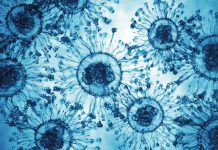The University of Würzburg has shed light on the intricate mechanisms of insulin production in fruit flies, revealing surprising parallels with human physiology. This study offers crucial insights into how insulin-producing cells respond to metabolic changes, with potential implications for understanding and treating diabetes
The intricate process of insulin regulation, crucial for maintaining metabolic balance, has been further elucidated by researchers at the University of Würzburg. Their study, published in eLife, delves into the mechanisms governing insulin production in fruit flies, offering potential insights applicable to human health and diseases like diabetes.
While the location of insulin production differs between flies and humans – in the brain for flies versus the pancreas for humans – the underlying system shares significant similarities. This research sheds light on how insulin-producing cells (IPCs) communicate with other neurons to respond effectively to metabolic changes and internal states.
Tracking cellular activity: Unveiling the incretin effect
A key aspect of the research involved tracking the activity of individual IPCs in living fruit flies under varying conditions. This innovative approach allowed the team to observe how IPCs respond to changes in energy balance. A significant finding was the observation that IPCs release insulin when flies consume sugar in their food but not when sugar is directly injected into their circulatory system (haemolymph).
This phenomenon, known as the incretin effect in humans, suggests that insulin secretion is not solely triggered by elevated blood sugar levels. Instead, it involves a more complex interplay of factors, likely including gut hormones. This discovery highlights the sophisticated regulatory mechanisms governing insulin release, even in seemingly simple organisms like fruit flies.
Age-related changes in insulin processing
The research also revealed that IPC activity diminishes in older flies. This observation suggests that the way insects process sugar may change with age, mirroring similar age-related changes in glucose metabolism observed in humans. Understanding these age-related changes in insulin production and processing is crucial for developing strategies to combat age-related metabolic decline and conditions like type 2 diabetes. Further research in this area could illuminate the specific mechanisms contributing to this decline and potentially pave the way for interventions to maintain healthy metabolic function throughout life.
The role of IPCs in foraging behaviour
Given the close link between foraging behaviour, energy reserves, and insulin secretion in fruit flies, the researchers investigated the influence of IPCs on these behaviours. By stimulating the IPCs optogenetically – mimicking the post-meal rise in sugar levels – they sought to understand the role of these cells in modulating foraging. Interestingly, they found that IPCs play a relatively minor role in this process compared to other nerve cells.
This suggests that while insulin is essential for metabolic regulation, other neuronal circuits play a more dominant role in controlling food-seeking behaviour.
This finding underscores the complexity of the neural circuits involved in regulating both metabolism and behaviour.
Insulin production and its implications for human health
While the research focused on fruit flies, the findings have potential implications for human health. As Dr. Jan Ache, head of the research group, explains, “With our experiments, we have refined our knowledge of the circuits that control insulin secretion in fruit flies.” This refined understanding opens avenues for further investigations that could ultimately translate to advancements in human health, particularly in the context of diabetes.
Despite the evolutionary distance between humans and fruit flies, they share fundamental similarities in their genetics and metabolism, including aspects of nervous system function and metabolic regulation. This conservation of biological mechanisms makes the fruit fly a valuable model organism for studying human diseases. By leveraging the relative simplicity of the fruit fly nervous system, researchers can dissect the intricate pathways involved in insulin regulation and identify potential therapeutic targets for metabolic disorders.
Future research on insulin production can build on these findings, which may lead to the development of novel strategies for preventing and treating diabetes and other related conditions.











